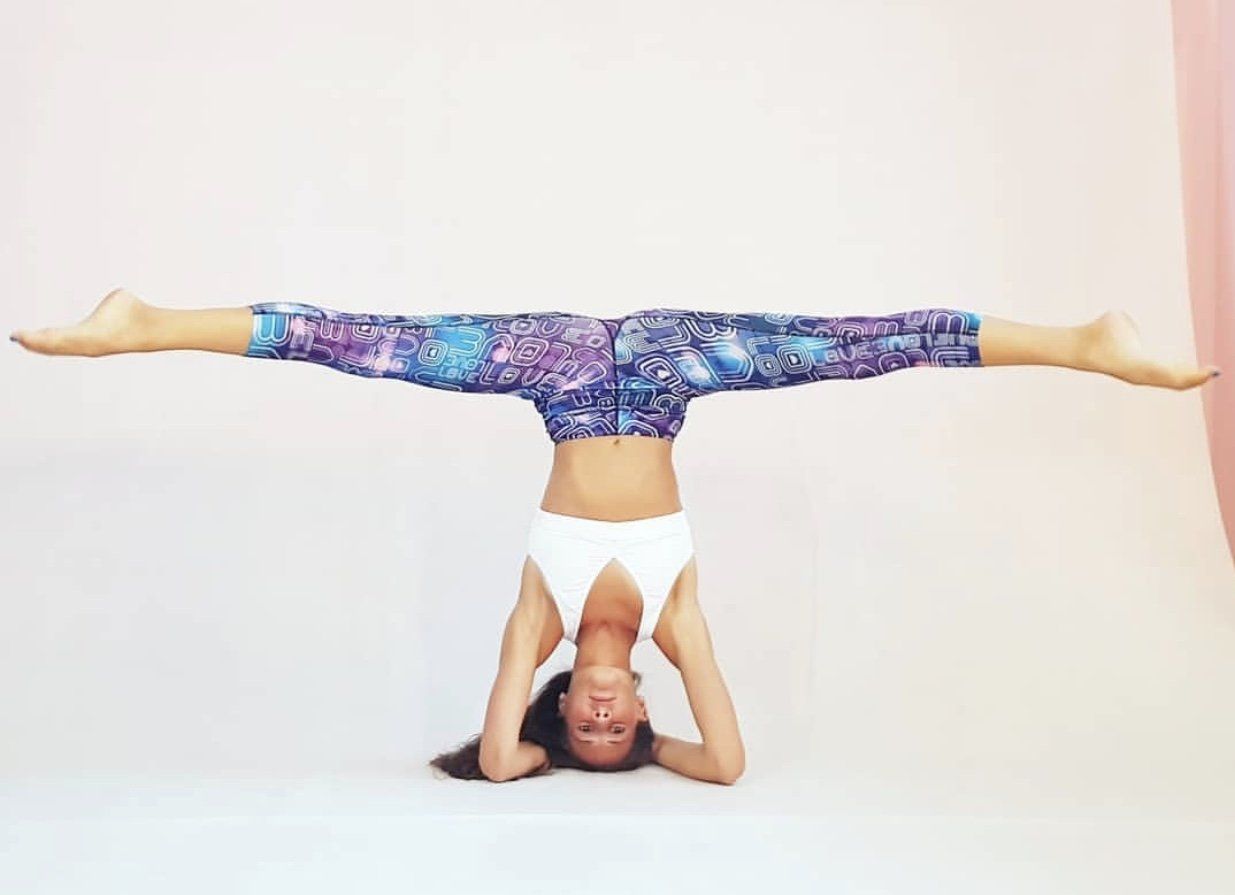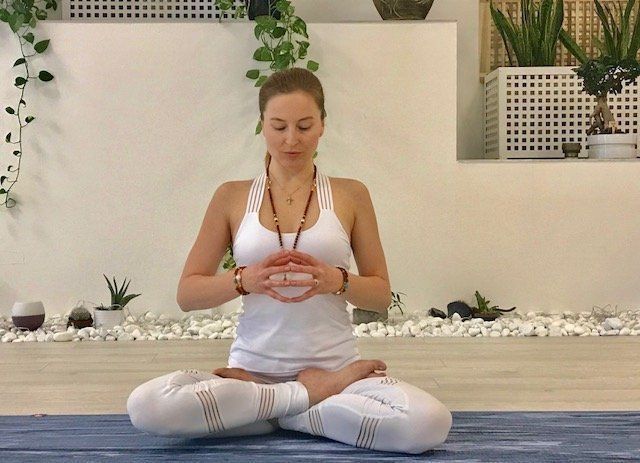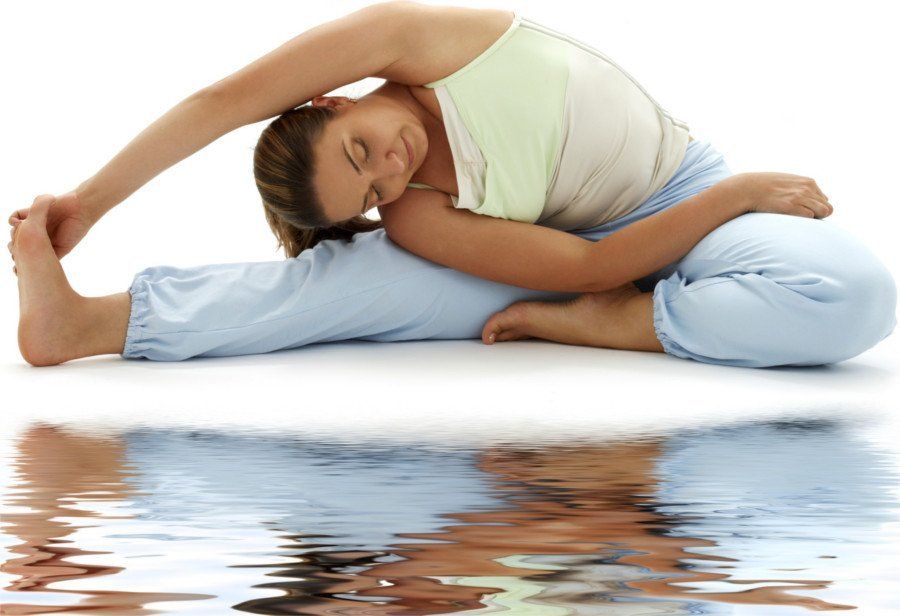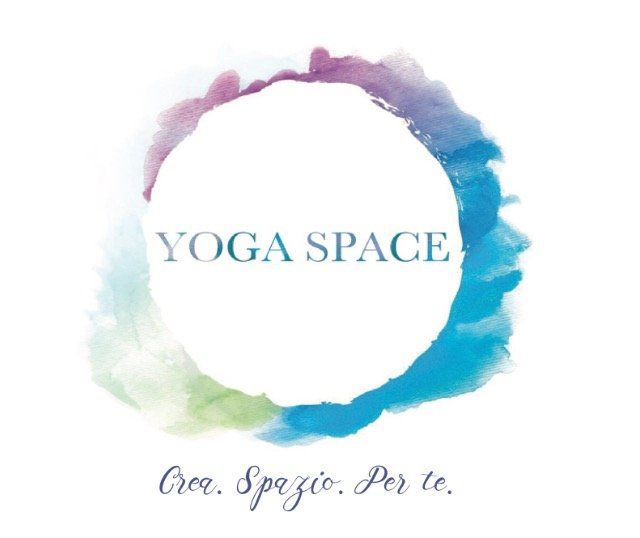Yoga for adults - Styles
Dynamic Yoga

In dynamic Yoga the asanas (positions) follow each other harmoniously
inviting body, mind and breath to coordinate and flow in unison.
Breath marks the rhythm of practice; muscle energy, progressively stimulatedit reaches a dynamic peak giving us a great sense of vitality.The vital energy (Prana) recalled through movement and breathing will slip into every part of the body, nourishing it in depth; releasing stress and deep tensions.
Once the maximum of the "fire" is reached, the pleasure of gradually relaxing the muscles will be savored. In practice we will cross the opposites: great sense of activity combined with the pleasure of relaxation and relaxation.
inviting body, mind and breath to coordinate and flow in unison.
Breath marks the rhythm of practice; muscle energy, progressively stimulatedit reaches a dynamic peak giving us a great sense of vitality.The vital energy (Prana) recalled through movement and breathing will slip into every part of the body, nourishing it in depth; releasing stress and deep tensions.
Once the maximum of the "fire" is reached, the pleasure of gradually relaxing the muscles will be savored. In practice we will cross the opposites: great sense of activity combined with the pleasure of relaxation and relaxation.
Ashtanga Yoga

It is a very rigorous style of yoga that follows specific sequences of asanas in which the principle of vinyasa is followed, that is, each movement is associated with a respiratory act.
This is undoubtedly among the most common types of yoga in the world.
This style is based on a practice in which the same positions are always performed in the same order. Between one position and another there is a short dynamic sequence called Vinyasa.
There are 6 different series and as you go on the exercises become more and more difficult. Each series is practiced for a long time until it is performed to perfection and so you can move on to the next.
In an Ashtanga Yoga class you will be guided to perform continuous position sequences. Not too much time is lost on alignments and you will be encouraged to breathe deeply as you move from one position to another.
Get ready to sweat a lot.
The continuous movement and use of mula bhanda (contraction of the perineum), of uddiyana bhanda (contraction of the abdomen), develop a great heat that induces intense sweating.
This is undoubtedly among the most common types of yoga in the world.
This style is based on a practice in which the same positions are always performed in the same order. Between one position and another there is a short dynamic sequence called Vinyasa.
There are 6 different series and as you go on the exercises become more and more difficult. Each series is practiced for a long time until it is performed to perfection and so you can move on to the next.
In an Ashtanga Yoga class you will be guided to perform continuous position sequences. Not too much time is lost on alignments and you will be encouraged to breathe deeply as you move from one position to another.
Get ready to sweat a lot.
The continuous movement and use of mula bhanda (contraction of the perineum), of uddiyana bhanda (contraction of the abdomen), develop a great heat that induces intense sweating.
Power Yoga

Questo stile conserva l’attivazione e l’energia dello Yoga dinamico regalando, in alcuni frangenti, esercizi funzionali atti ad attivare maggiormente la muscolatura con sequenze ritmiche in progressione.
Kundalini Yoga

The philosophy of Kundalini yoga has been handed down orally through the centuries, its promoters say that its foundation dates back to over 20,000 years ago.
The lessons of Kundalini yoga are all very different from each other, we pass from the very physical and dynamic ones in which asanas (positions) are developed even complex, to classes where the practice is almost entirely meditative - with or without the aid of techniques of breathing (pranayama).
The benefits of Kundalini yoga: they are found above all on a psycho-physical level.
In particular the benefits that are obtained with Kundalini yoga are:
The lessons of Kundalini yoga are all very different from each other, we pass from the very physical and dynamic ones in which asanas (positions) are developed even complex, to classes where the practice is almost entirely meditative - with or without the aid of techniques of breathing (pranayama).
The benefits of Kundalini yoga: they are found above all on a psycho-physical level.
In particular the benefits that are obtained with Kundalini yoga are:
- physical level: improvement of the functioning of the cardiovascular system; strengthening of the nervous, digestive and lymphatic systems; balancing of the glandular system.
- on the psychic level: more balance in the emotions, with consequent greater lucidity in making decisions; increase of the sixth sense; reduction of stress and anxiety; resolution of even very deep internal conflicts; improvement of relationships, even of couples.
Light Yoga

A class that stimulates the different spheres of being (body, mind and spirit) in equal measure.
The asana sequence creates a very fluid, slow, constant rhythm; a moving meditation in which the body "lets itself be guided".
It is a conscious flow that asks us to keep an eye on alignment and posture while savoring what the body and emotions want to communicate.
In practice we will perform very simple breathing techniques (Pranayama).
The asana sequence creates a very fluid, slow, constant rhythm; a moving meditation in which the body "lets itself be guided".
It is a conscious flow that asks us to keep an eye on alignment and posture while savoring what the body and emotions want to communicate.
In practice we will perform very simple breathing techniques (Pranayama).
Hatha Yoga

Hatha Yoga means a generic style that simply refers to tradition.
It is a style that focuses almost entirely on physical practice (asana and pranayama) and less on other more spiritual aspects.
In this type of yoga a modest physical effort is made with the aim of being able to overcome one's physical limits. At the same time, however, one never forgets the relaxation and calm that should exist in every asana.
At the end of each class you feel stronger, more flexible and certainly more relaxed.
Hatha Yoga, as well as other styles, increases the strength of the muscles, giving it flexibility at the same time, removes stiffness in the spine and keeps the elastic joints even if the years pass.
In general there is a greater awareness of one's body and the mind also has innumerable benefits.
It is a style that focuses almost entirely on physical practice (asana and pranayama) and less on other more spiritual aspects.
In this type of yoga a modest physical effort is made with the aim of being able to overcome one's physical limits. At the same time, however, one never forgets the relaxation and calm that should exist in every asana.
At the end of each class you feel stronger, more flexible and certainly more relaxed.
Hatha Yoga, as well as other styles, increases the strength of the muscles, giving it flexibility at the same time, removes stiffness in the spine and keeps the elastic joints even if the years pass.
In general there is a greater awareness of one's body and the mind also has innumerable benefits.
Yoga Ratna

The Yoga Ratna (Ratna in Sanskrit means "pearl", jewel) is what we have inside us and we try to make it shine outside of us through the practice of yoga.
It is a yoga that integrates ancient traditions with new, unpublished asanas.
Along with taking care of the physical appearance of the positions, the symbolic aspect in this type of yoga is very important.
By performing various asanas that refer to the divine, human, animal, vegetable world, we can in fact reawaken aspects, qualities that already exist in us, perhaps a little asleep, and reliving them to make them more present and aware. In this way we experience multiple aspects of being.
This type of yoga is particularly sensitive to female problems, to the seasons of women, expanding an originally especially "male" view of yoga.
The Yoga Ratna method is poetry, harmony and elegance.
A journey to live with the body. We become a thousand different forms to transfer the symbolic strength of each asana into us.
A path of psycho-physical well-being, of transformation and personal growth while respecting the times, limits and rhythms of each individual.
It is a yoga that integrates ancient traditions with new, unpublished asanas.
Along with taking care of the physical appearance of the positions, the symbolic aspect in this type of yoga is very important.
By performing various asanas that refer to the divine, human, animal, vegetable world, we can in fact reawaken aspects, qualities that already exist in us, perhaps a little asleep, and reliving them to make them more present and aware. In this way we experience multiple aspects of being.
This type of yoga is particularly sensitive to female problems, to the seasons of women, expanding an originally especially "male" view of yoga.
The Yoga Ratna method is poetry, harmony and elegance.
A journey to live with the body. We become a thousand different forms to transfer the symbolic strength of each asana into us.
A path of psycho-physical well-being, of transformation and personal growth while respecting the times, limits and rhythms of each individual.
Shakti Dance

Shakti Dance is a bodily experience and an inner exploration that combines yoga, dance, mantra, relaxation and meditation.
It is a technique created by Sara Avtar, dancer, singer and teacher of Kundalini Yoga.
The practice of Shakti Dance accompanies us in a deep connection with our interiority and with our body, towards a balanced and relaxed state, but also tonic and lucid.
It alternates phases of movement (fluid stretching exercises, simple danced steps and free dance) to more static phases (mantra, relaxation, meditation) to create a space in which we listen to ourselves with kindness and take care of ourselves.
The Sanskrit word Shakti means 'energy' and in the archetypal language it is the life force that permeates existence, which sustains and nourishes us ..
It is the breath that animates us, the impulse that makes the heart beat, the charge that gives us movement, the voice of our instincts, the will in our actions, the creative strength in our thoughts and the flow of our emotions.
It is a technique created by Sara Avtar, dancer, singer and teacher of Kundalini Yoga.
The practice of Shakti Dance accompanies us in a deep connection with our interiority and with our body, towards a balanced and relaxed state, but also tonic and lucid.
It alternates phases of movement (fluid stretching exercises, simple danced steps and free dance) to more static phases (mantra, relaxation, meditation) to create a space in which we listen to ourselves with kindness and take care of ourselves.
The Sanskrit word Shakti means 'energy' and in the archetypal language it is the life force that permeates existence, which sustains and nourishes us ..
It is the breath that animates us, the impulse that makes the heart beat, the charge that gives us movement, the voice of our instincts, the will in our actions, the creative strength in our thoughts and the flow of our emotions.
Odaka Yoga

Odaka Yoga is an innovative style of yoga that is inspired by the observation of the motion of the ocean and its waves, where the principles of transformation, adaptability and inner strength are expressed physically and emotionally.
The natural rhythms of wave motion are reproduced by the body during practice, so as to make it acquire the compliance of water.
The biomechanics and the fluid movement of the Odaka Warrior, allows you to live centered in the midst of chaos.
The goal is to re-educate the body to move in its integrity by awakening body intelligence. Create specific sequences for different areas of the body. Acting on postural alignment preventing muscle, skeletal and tissue-related accidents. Activate the muscles in a balanced and functional movement, to strengthen and lengthen.
The natural rhythms of wave motion are reproduced by the body during practice, so as to make it acquire the compliance of water.
The biomechanics and the fluid movement of the Odaka Warrior, allows you to live centered in the midst of chaos.
The goal is to re-educate the body to move in its integrity by awakening body intelligence. Create specific sequences for different areas of the body. Acting on postural alignment preventing muscle, skeletal and tissue-related accidents. Activate the muscles in a balanced and functional movement, to strengthen and lengthen.
Yin Yoga

Yin Yoga è una pratica semplice e dal ritmo lento, che agisce sul tessuto connettivo profondo del corpo. Allo stesso tempo aiuta a migliorare la capacità di movimento delle articolazioni, a stimolare il flusso energetico dei meridiani e degli organi, a calmare le emozioni, ed a preparare il corpo e la mente per stati profondi di meditazione.
Mantenendo ogni asana per alcuni minuti e seguendo una respirazione profonda e consapevole, lentamente si cominciano a rilassare i muscoli, permettendo al tessuto connettivo profondo che avvolge i muscoli e danno forma alle capsule articolari (fascia, legamenti, tendini ed ossa) di nutrirsi, fortificarsi ed “allugarsi” in modo sicuro e terapeutico.
La pratica Yin si focalizza sull’auto-osservazione e l’ascolto. Quando si assume una postura, seguendo l’allineamento naturale, si lasciano andare tutte le distrazioni e idee preconcette e si porta l’attenzione in modo particolare nel momento presente, su un’intenzione e senza giudicare, sviluppando così la capacità di sentire il movimento nel non-movimento, di percepire le sensazioni del corpo o le emozioni che emergono, e di sentire il respiro, con la mente e con il cuore.
Mantenendo ogni asana per alcuni minuti e seguendo una respirazione profonda e consapevole, lentamente si cominciano a rilassare i muscoli, permettendo al tessuto connettivo profondo che avvolge i muscoli e danno forma alle capsule articolari (fascia, legamenti, tendini ed ossa) di nutrirsi, fortificarsi ed “allugarsi” in modo sicuro e terapeutico.
La pratica Yin si focalizza sull’auto-osservazione e l’ascolto. Quando si assume una postura, seguendo l’allineamento naturale, si lasciano andare tutte le distrazioni e idee preconcette e si porta l’attenzione in modo particolare nel momento presente, su un’intenzione e senza giudicare, sviluppando così la capacità di sentire il movimento nel non-movimento, di percepire le sensazioni del corpo o le emozioni che emergono, e di sentire il respiro, con la mente e con il cuore.



